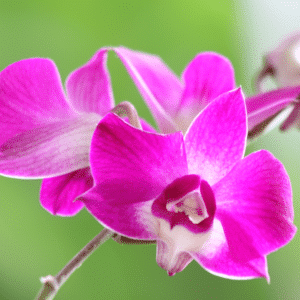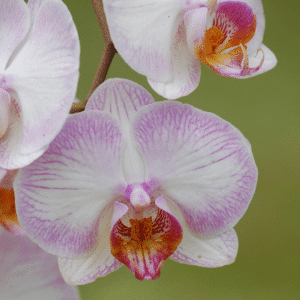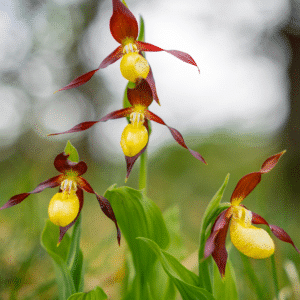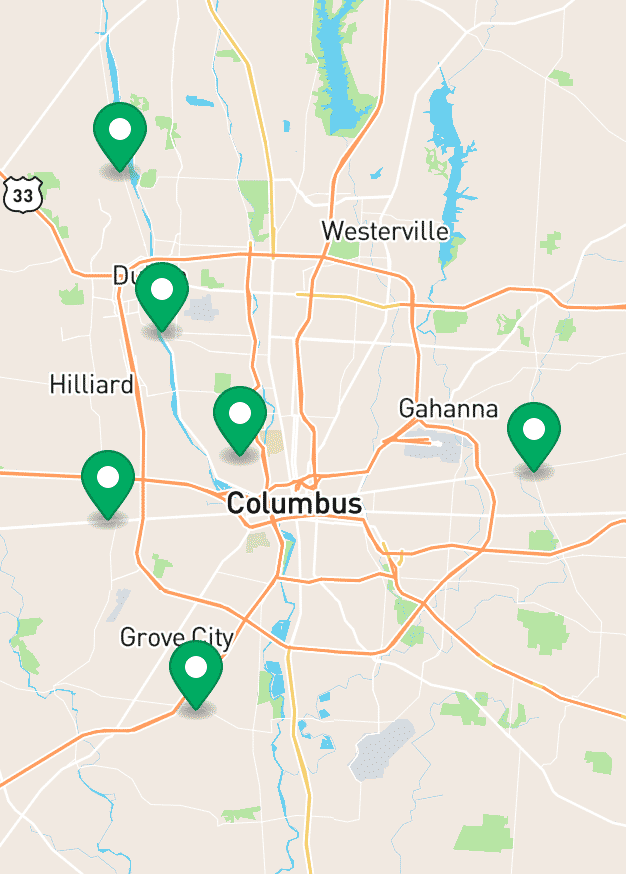Phalaenopsis vs. Dendrobium: Key Differences & Care Tips
Orchids are among the most exquisite and rewarding houseplants you can grow. With their stunning blooms and unique beauty, they bring elegance to any home. Whether you’re a novice or an orchid enthusiast, there are many types of orchids to choose from. Among the most popular varieties are Phalaenopsis and Dendrobium, but there are many other types you’ll find at garden centers, each with its own specific care needs.
In this guide, we’ll dive into the differences between two of the most popular orchids, share tips for caring for them, and give you the inside scoop on how to get them to rebloom year after year. Plus, we’ll touch on Espoma Orchid Bark and Jack’s Orchid Fertilizer, essential products that will help you maintain happy, healthy orchids.
Phalaenopsis Orchids (Moth Orchids): The Easygoing Beauties
Characteristics
Phalaenopsis orchids, often called Moth Orchids, are one of the most commonly found orchids. Their large, waxy flowers come in a variety of colors, including white, pink, purple, yellow, and even spotted varieties. Known for their long-lasting blooms and relatively low-maintenance care, Phalaenopsis are perfect for beginners and orchid lovers alike.
Care Tips for Phalaenopsis Orchids
- Light: Place your Phalaenopsis in bright, indirect light; avoid direct sunlight.
- Temperature: Ideal temperature range: 65-75°F (18-24°C).
- Watering: Water once a week, letting the potting mix dry out slightly between waterings.
- Humidity: Aim for humidity levels of 50-70%.
- Potting Mix: Use Espoma Orchid Bark for optimal drainage and root health.
How to Rebloom Phalaenopsis Orchids
- Cut the Flower Spike: After flowers fade, cut the flower spike back to just above the node (the small bump on the stem) to encourage new blooms.
- Rest Period: Phalaenopsis benefit from a resting period with cooler temperatures and reduced watering to simulate the dry season.
- Fertilizing: Use Jack’s Orchid Fertilizer every 2-3 weeks during the growing season to support healthy growth and reblooming.
Dendrobium Orchids: Bold and Dramatic Blooms
Characteristics
Dendrobium orchids are known for their dramatic, upright blooms that appear in clusters. These orchids come in various colors, such as white, purple, pink, and yellow, and have a striking appearance that makes them a favorite among many orchid collectors.
Care Tips for Dendrobium Orchids
- Light: Dendrobiums thrive in bright, indirect light but can tolerate more direct sunlight than Phalaenopsis.
- Temperature: Ideal temperature range: 60-80°F (16-27°C). Cooler temps at night help trigger blooming.
- Watering: Water once a week during the growing season, and reduce watering in the winter during the resting period.
- Humidity: Maintain humidity levels around 40-60%.
- Potting Mix: Use Espoma Orchid Bark to allow for proper root drainage and airflow.
How to Rebloom Dendrobium Orchids
- Resting Period: Dendrobiums need a winter rest period with cooler temperatures and reduced watering.
- Increase Light and Temperature: After the resting period, move your orchid to a warmer spot with bright light to encourage reblooming.
- Fertilizing: Feed your Dendrobium with Jack’s Orchid Fertilizer during the growing season to encourage healthy buds and vibrant blooms.
Common Orchids Found in Strader’s Garden Centers
Here’s a list of orchids you can often find at garden centers, perfect for adding color and life to your home:
Oncidium Orchids (Dancing Lady Orchids)
- Oncidium orchids feature small, colorful blooms that resemble dancing figures. They come in bright yellows, reds, and browns and are easy to grow with the right care.
Paphiopedilum Orchids (Lady Slipper Orchids)
- With their unique, slipper-shaped flowers, Paphiopedilum orchids come in colors such as pink, green, and white. They are fairly easy to care for and tolerate a variety of growing conditions.
Vanilla planifolia (Vanilla Orchids)
- Vanilla orchids are vining orchids known for their long, green stems and delicate, pale yellow or greenish flowers. These orchids require warm, humid conditions and support for climbing. They are the source of natural vanilla beans, making them both beautiful and functional.
Orchid Care Tips
To keep your orchids healthy and blooming, here are a few general care tips that apply to most varieties:
- Repotting: Orchids should be repotted every 1-2 years using a fresh potting mix like Espoma Orchid Bark to maintain proper drainage and air circulation for the roots.
- Air Circulation: Orchids benefit from good airflow, so avoid placing them in stagnant, overly humid areas.
- Humidity: Orchids love humidity, so if you live in a dry climate, consider using a humidity tray or room humidifier to maintain ideal conditions.
- Watering: Water your orchids thoroughly, but allow the potting mix to dry slightly between waterings. Avoid letting your orchids sit in water, as this can lead to root rot.
Fertilizing Your Orchids
Regular fertilization is essential for healthy orchid growth. Jack’s Orchid Fertilizer is a fantastic option for keeping your orchids nourished. Here’s how to use it:
- During the Growing Season: Apply Jack’s Orchid Fertilizer every 2-3 weeks, following the manufacturer’s instructions for proper dilution.
- During the Resting Period: Reduce fertilizing to once a month, or skip it entirely during the dormant season.
Bring the Beauty of Orchids Into Your Home
Orchids are an elegant and beautiful addition to any home, and with the right care, they can thrive for years. Whether you choose a Phalaenopsis, a Dendrobium, or any of the other stunning varieties available, following basic care guidelines like proper watering, humidity, and the use of high-quality products like Espoma Orchid Bark and Jack’s Orchid Fertilizer will ensure success.
Ready to start growing your own beautiful orchids? Stop by Strader’s to explore a wide variety of orchids and find everything you need to give them the best care possible!















